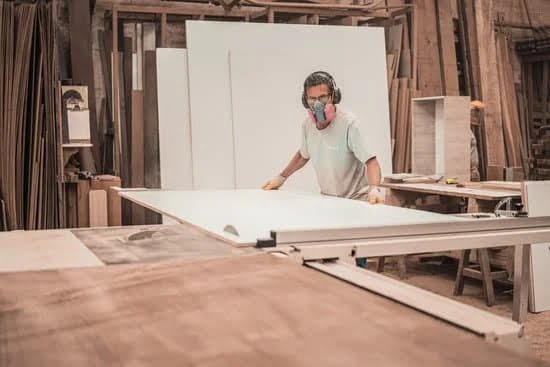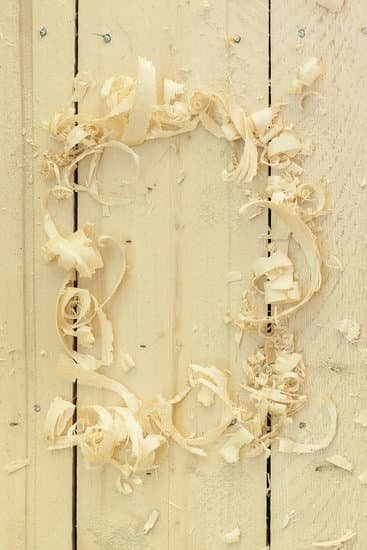Are you a woodworking enthusiast looking to build the perfect workbench for your projects? In this article, we will explore the world of fine woodworking workbench plans and provide you with all the essential information you need to get started. From the importance of having a solid workbench to choosing the right materials and step-by-step building guide, we’ve got you covered.
Whether you’re a beginner or experienced woodworker, having a sturdy and well-designed workbench is crucial for achieving professional results in your projects. So, let’s dive into the world of fine woodworking workbench plans and learn how to create the perfect workspace for your craft.
A solid workbench is an essential tool for any woodworking shop, providing a stable and reliable surface for various tasks such as sawing, sanding, chiseling, and assembling. Having a well-designed workbench can make a significant difference in the quality and efficiency of your work. Throughout this article, we will discuss why having a sturdy workbench is important and how it can enhance your woodworking experience.
When it comes to building your own fine woodworking workbench, choosing the right materials is crucial for creating a strong and durable foundation. We will explore different options for workbench materials, such as hardwoods, softwoods, plywood, and other engineered wood products.
Additionally, we will discuss how to select the best materials based on your budget, available tools, and specific needs for your woodworking projects. Whether you prefer traditional solid wood construction or modern composite materials, we’ll help you make informed decisions about what works best for your workshop.
Importance of Having a Solid Workbench in Woodworking
Enhanced Stability and Precision
A solid workbench is an essential element in any woodworking shop as it provides the stability and support needed for precision work. When working with heavy materials or using power tools, a sturdy workbench ensures that your project stays securely in place, reducing the risk of accidents and mistakes. Additionally, having a level and flat surface to work on will allow for more accurate measurements and cuts, resulting in higher quality finished products.
Organization and Efficiency
Having a dedicated workbench also allows for better organization and efficiency in your woodworking projects. With built-in storage features such as drawers, shelves, and pegboards, you can keep your tools, materials, and accessories within easy reach. This not only saves time searching for what you need but also keeps your workspace clutter-free, making it easier to focus on the task at hand.
Professionalism and Longevity
For those pursuing woodworking as a profession or serious hobby, a solid workbench is a symbol of professionalism and dedication to the craft. Investing time in building or acquiring a high-quality workbench demonstrates a commitment to producing high-caliber woodworking pieces. Furthermore, a well-constructed workbench made from durable materials can last for many years with proper care, providing a reliable foundation for countless projects to come.
Overall, the importance of having a solid workbench in woodworking cannot be overstated when it comes to safety, efficiency, and maintaining high standards of craftsmanship. Using fine woodworking workbench plans can guide you in creating the perfect foundation for your woodworking endeavors.
Choosing the Right Materials for Your Workbench
When it comes to building a sturdy and reliable workbench for fine woodworking, the choice of materials is crucial. The right materials can ensure the durability and stability of your workbench, making it a long-lasting investment for your woodworking projects. Here are some top choices for materials to consider when building your own fine woodworking workbench:
- Hardwood: Hardwoods such as maple, oak, or beech are popular choices for building workbenches due to their strength and durability. They can withstand heavy use and provide a solid surface for woodworking tasks.
- Plywood: While hardwood is often preferred for workbench tops, plywood can be an economical option for building the base and shelves of the workbench. It provides stability and support while keeping costs down.
- Bench Vises: Investing in high-quality bench vises is essential for a fine woodworking workbench. Look for vises made of sturdy materials such as cast iron to ensure they can handle the pressure of clamping during woodworking tasks.
- Bench Dogs: Consider adding bench dogs to your workbench design, which are pegs that can be used with bench stops or holdfasts to secure wood pieces in place while you work on them.
By carefully selecting the right materials for your fine woodworking workbench, you can create a workspace that is both functional and durable. With the proper materials, your workbench will provide a stable foundation for all of your woodworking projects.
Remember that proper maintenance and care will extend the life of your fine woodworking workbench. Regularly inspecting and cleaning the surfaces, tightening any loose components, and reapplying finishes as needed will keep your workbench in top condition for years to come.
Tools and Equipment Needed for Building a Workbench
Building your own fine woodworking workbench requires the right tools and equipment to ensure that the finished product is sturdy and functional. The following are essential tools and equipment needed for building a workbench:
1. Measuring Tools: Accurate measurements are essential for ensuring that all components of the workbench fit together properly. Measuring tools such as a tape measure, combination square, and straightedge are necessary for this task.
2. Cutting Tools: A variety of cutting tools will be needed to cut the different materials used in constructing the workbench. These may include a circular saw, jigsaw, handsaw, or miter saw.
3. Joinery Tools: Depending on the joinery methods you plan to use, you may need chisels, a router with appropriate bits, a dovetail saw, or a biscuit joiner.
4. Fastening Tools: To secure the components of the workbench together, you will need fastening tools such as a power drill or driver, hammer, nails, screws, clamps, and glue.
5. Finishing Tools: Once the workbench is assembled, finishing tools such as sandpaper or a sander will be needed to smooth out any rough edges and apply a protective finish.
It’s important to have all the necessary tools and equipment ready before starting construction on your fine woodworking workbench plans to ensure a smooth building process without needless interruptions. In addition to these basic items mentioned above other specific hand-tools considered include bench planes,dovetailing saws etc depending on individual’s need.
Step-by-Step Guide to Building Your Own Fine Woodworking Workbench
Building your own fine woodworking workbench can be a rewarding and cost-effective way to enhance your woodworking experience. By following these step-by-step guidelines, you can create a sturdy and reliable workbench that will support all of your woodworking projects.
Gather Your Materials and Tools
First, gather all the necessary materials and tools needed for the construction of your workbench. This may include hardwood lumber, plywood, screws, wood glue, a saw, drill, measurement tools, and other essential woodworking equipment. Ensuring that you have everything you need before starting will help make the building process smoother and more organized.
Follow Detailed Plans
It is important to follow detailed fine woodworking workbench plans to ensure that your workbench is structurally sound and built to last. Look for plans that provide precise measurements, diagrams, and instructions for each step of the construction process. Following detailed plans will help prevent mistakes and ensure that your workbench turns out exactly as intended.
Assemble Your Workbench
Once you have gathered your materials and followed the detailed plans, it’s time to start building your workbench. Begin by cutting the lumber to size according to the plans, then assemble the base frame and attach the legs. Next, add the top surface and any additional features or accessories based on your specific needs. Take your time during this process to ensure accuracy and precision in every step of construction.
By following these step-by-step guidelines for building your own fine woodworking workbench, you can create a durable workspace that meets all of your woodworking requirements. Whether you are a beginner or an experienced woodworker, having a custom-built workbench tailored to your specific needs can greatly enhance the quality of your projects.
Tips and Tricks for Customizing Your Workbench to Fit Your Needs
When it comes to customizing your workbench, there are several factors to consider. One of the most important things to think about is the height of your workbench. Since everyone’s body is different, it’s important to make sure that your workbench is at a comfortable height for you.
This can help reduce strain on your back and shoulders as you work on your projects. Another thing to consider is adding storage options to your workbench. This can include shelves, drawers, or pegboards to keep your tools and materials organized and easily accessible.
In addition to customizing the physical aspects of your workbench, you may also want to consider adding accessories such as bench dogs, holdfasts, or a woodworking vise. These accessories can greatly expand the functionality of your workbench and make certain tasks much easier.
Finally, don’t forget about the surface of your workbench. Depending on the type of woodworking projects you do, you may want to add a sacrificial top layer that can easily be replaced when damaged or worn down.
By taking these tips and tricks into consideration, you can create a customized workbench that fits your needs perfectly and makes your woodworking projects more enjoyable and efficient.
| Factors for Customizing Your Workbench | Description |
|---|---|
| Height | Consider adjusting the height for optimal comfort while working |
| Storage Options | Add shelves, drawers, or pegboards for organization and accessibility |
| Accessories | Consider adding bench dogs, holdfasts, or a vise for added functionality |
Maintenance and Care for Your Fine Woodworking Workbench
Now that you have successfully built your own fine woodworking workbench using the plans provided, it is important to learn about the maintenance and care required to keep your workbench in top condition. A well-maintained workbench will not only last longer but also provide a stable and reliable surface for all your woodworking projects.
To ensure the longevity of your workbench, here are some maintenance tips to follow:
- Regular cleaning: Keep your workbench free from dust, debris, and wood shavings by regularly wiping it down with a damp cloth or vacuuming.
- Check for wear and tear: Inspect your workbench for any signs of wear such as loose joints, cracks, or splintered wood. Repair any damages immediately to prevent further deterioration.
- Protective finishes: Apply a protective finish such as varnish or polyurethane to seal the wood and provide added durability. Reapply the finish as needed to maintain protection.
In addition to maintenance, proper care is also essential in preserving the quality of your fine woodworking workbench. Here are some care practices to consider:
- Avoid excessive weight: While sturdy, it’s important not to overload your workbench with heavy materials or equipment beyond its weight limit.
- Use appropriate tools: When working on your bench, use tools with non-abrasive surfaces to prevent damaging its top surface.
- Store with care: When not in use, cover your workbench with a cloth or tarp to protect it from dust and scratches. Additionally, avoid exposing it to direct sunlight or extreme temperatures that could cause warping or discoloration of the wood.
By following these maintenance and care practices, you can ensure that your fine woodworking workbench remains in optimal condition for years to come. Remember that investing time in maintaining and caring for your workbench will ultimately contribute to the quality of your woodworking projects.
Additional Resources and Recommendations for Fine Woodworking Workbench Plans
In conclusion, having a solid workbench is crucial for anyone passionate about fine woodworking. With the right materials, tools, and equipment, building your own workbench can be a rewarding experience. Choosing the right materials such as hardwood or sturdy plywood can ensure the durability and stability of your workbench. Additionally, taking the time to customize your workbench to fit your specific needs can greatly enhance your woodworking projects.
Building your own fine woodworking workbench can be a fulfilling project that not only provides you with a dedicated space for your craft but also allows you to showcase your skills and craftsmanship. By following step-by-step guides and utilizing additional resources and recommendations for fine woodworking workbench plans, you can create a workbench that is tailored to your preferences and requirements.
It’s important to remember that proper maintenance and care for your workbench is essential in ensuring its longevity and functionality. Regular inspection, cleaning, and occasional refinishing will keep your workbench in top condition for years to come. By investing time and effort into building and maintaining your fine woodworking workbench, you are setting yourself up for success in all of your future woodworking endeavors.
Frequently Asked Questions
Is It Cheaper to Build a Workbench or Buy One?
The cost of building a workbench versus buying one can vary. Building a workbench yourself can be cheaper if you already have the necessary tools and materials. However, purchasing a pre-made workbench may be more cost-effective if you lack the tools or skills needed for construction.
What Size Workbench Is Best for Woodworking?
The best size workbench for woodworking depends on the space available in your workshop and the types of projects you typically work on. A standard workbench size is around 3 to 4 feet wide and 6 to 8 feet long, providing enough space for most woodworking tasks without being too large or too small.
What Type of Wood Is Best for a Workbench?
When choosing wood for a workbench, it’s important to select a sturdy and durable hardwood that can withstand heavy use. Woods like maple, oak, beech, and birch are popular choices due to their strength and resistance to wear and tear. Additionally, considering laminating multiple layers of wood together can enhance the bench’s durability.

Hi everyone! I’m a woodworker and blogger, and this is my woodworking blog. In my blog, I share tips and tricks for woodworkers of all skill levels, as well as project ideas that you can try yourself.





